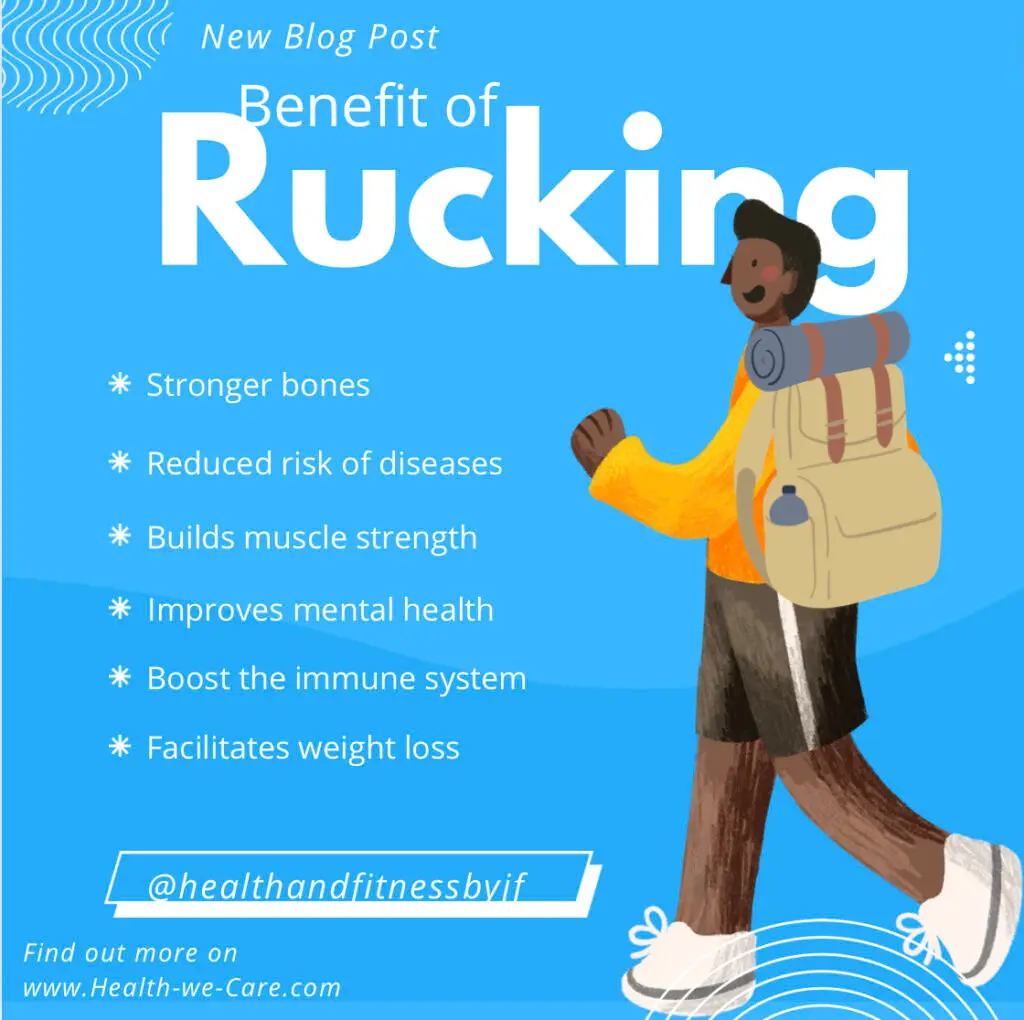When it comes to fitness trends, we’ve seen it all: HIIT workouts, CrossFit, yoga fusions, and even dance-based routines. But lately, a new contender has stepped out from the military world and onto the fitness scene, promising an effective, low-impact method to build strength and shed fat—it’s called Rucking. While it might sound like a hardcore training session reserved for elite soldiers, rucking is surprisingly accessible and has gained a lot of traction among fitness enthusiasts for its versatility and effectiveness.
So, what is rucking? And can this military-born workout really be the best fat-burning method for the average person? In this post, we’ll explore everything you need to know about rucking, including its benefits, how to get started, and whether it’s worth incorporating into your fitness routine.
What is Rucking?
Rucking originated from military training, where soldiers march long distances with heavy backpacks filled with gear and supplies. The term itself comes from “rucksack,” which is simply military jargon for a backpack. In essence, rucking is a form of weighted walking, where you strap on a backpack loaded with weight and go for a hike or a brisk walk.
The idea might sound deceptively simple, but don’t underestimate its power. Walking with added weight turns a basic cardio exercise into a full-body workout. Your legs, core, and upper body all work harder to stabilize and move with the extra load, leading to increased calorie burn, muscle endurance, and cardiovascular benefits.
Why Rucking is the New Fat-Burning Sensation
Rucking has recently gained attention in the fitness community for its numerous health benefits and practicality. It’s not just about burning calories; it’s also a low-impact exercise that strengthens muscles, improves posture, and is far more engaging than a typical walk or jog. But what makes rucking a potential game-changer for fat loss?
- Burns More Calories than Walking Alone: The additional weight in your rucksack forces your body to work harder. This means you burn significantly more calories than if you were just walking without the load. Depending on your weight, speed, and the heaviness of your pack, you can burn anywhere from 40% to 60% more calories compared to walking unweighted.
- Low Impact on Joints: Unlike running, which can put a strain on your knees and hips, rucking is a low-impact activity. This makes it an excellent option for those who want to avoid the wear and tear of high-impact exercises while still getting a solid cardiovascular workout.
- Builds Functional Strength: Because rucking involves carrying a load while maintaining proper posture and stability, it builds real-world, functional strength. It engages your shoulders, back, core, and legs in a way that mimics everyday activities, such as carrying groceries, moving furniture, or hiking.
- Boosts Mental Toughness: Rucking isn’t just physically demanding—it also tests your mental grit. Walking with a heavy load for miles can be uncomfortable and tiring, but pushing through builds resilience and endurance.
- Increases Cardiovascular Health: Despite being a lower-intensity activity compared to running or cycling, rucking still offers great cardiovascular benefits. It raises your heart rate to the moderate intensity zone, which is ideal for improving heart health and stamina.
Unlock the Secret to a Healthier You with Intermittent Fasting!
Ready to enhance your health and wellness journey? Check out our ultimate guide to intermittent fasting and discover the key to unlocking a healthier, more balanced lifestyle. Don’t miss out on these game-changing insights—start your transformation today! [Click here to learn more!]
Getting Started: How to Begin Rucking
The beauty of rucking is its simplicity and scalability. Whether you’re a beginner or a seasoned athlete, you can adjust the weight, distance, and intensity to suit your fitness level. Here’s a step-by-step guide to get you started:
1. Choose the right gear:
- Backpack/Rucksack: You don’t need a fancy military rucksack to start rucking. A sturdy, comfortable backpack will do the trick. However, if you’re serious about it, consider investing in a rucksack specifically designed for rucking, which has reinforced stitching and better weight distribution.
- Weight: For beginners, start with a weight that is 10% of your body weight. You can use sandbags, dumbbells, or specially designed ruck plates. As you get stronger, gradually increase the weight up to 20% of your body weight.
- Footwear: Choose supportive, well-cushioned shoes or boots, as your feet will bear extra pressure from the added load.
- 2. Start Slow: Begin with a 2-3 mile walk on flat terrain at a moderate pace. Focus on maintaining good posture: keep your back straight, shoulders down and back, and engage your core. Gradually increase your distance and weight as your fitness improves.
- 3. Mix Up the Terrain: Once you’re comfortable on flat ground, challenge yourself with hill climbs, trails, or staircases. The varied terrain will engage different muscle groups and add intensity to your ruck.
- 4. Set a Goal: Military training often involves rucking long distances under time constraints. Set personal goals to keep yourself motivated. Aim for a certain distance, weight, or speed, and track your progress over time.
- 5. Incorporate Rucking Into Your Routine: Rucking is versatile enough to be a standalone workout or an addition to your current routine. Use it as an active recovery day, a replacement for a cardio session, or even as a group activity with friends.

Rucking vs. Running: Which is Better for Fat Loss?
One of the main questions people ask is whether rucking is more effective for fat loss than running. While both activities burn calories, they do so in different ways.
- Calorie Burn: Running typically burns more calories per minute than rucking. However, the added weight in rucking increases the calorie burn significantly compared to unweighted walking.
- Impact on Joints: Running, especially on hard surfaces, can be taxing on your joints. Rucking, being a lower-impact exercise, is a great alternative for those with knee or hip concerns.
- Muscle Engagement: Rucking engages your upper body and core much more than running, leading to a more balanced workout.
- Sustainability: Rucking is easier to sustain for longer periods, making it a viable option for those who want to exercise for extended durations without the fatigue or potential injuries associated with long-distance running.
Discover Our Personalized Fitness Plans!
Are you ready to take your fitness journey to the next level? Our personalized fitness plans are designed to fit your unique needs and help you achieve your health and wellness goals. Get started on your path to success today! [Learn more here!]
Rucking Workouts to Try
Ready to add rucking to your routine? Here are a few sample workouts to get you started:
- Beginner Ruck:
- Load: 10% of your body weight
- Distance: 2 miles
- Terrain: Flat
- Goal: Maintain a steady pace and focus on good form.
- Interval Rucking:
- Load: 15% of your body weight
- Distance: 3 miles
- Every 5 minutes, perform 10 squats and 10 push-ups with your rucksack on.
- Hill Ruck Challenge:
- Load: 20% of your body weight
- Distance: 2 miles with multiple hill climbs
- Focus: Power up the hills and maintain control on the descents.
- Ruck and Run:
- Load: 15% of your body weight
- Alternate between jogging and brisk walking every 3 minutes for a total of 30 minutes.
Is Rucking the Best Fat-Burning Method?
Rucking is a highly effective, versatile workout that burns calories, builds muscle, and enhances cardiovascular health—all without the high impact of other exercises. For those looking to burn fat while preserving muscle, it’s a fantastic addition to any fitness program. Its combination of cardio and strength benefits, low joint impact, and practicality make it a strong contender in the fat-burning department.
While rucking might not burn as many calories per minute as sprinting, its accessibility and sustainability mean you can perform it for longer periods, which can ultimately lead to more total calorie expenditure. Plus, it’s a workout you can do almost anywhere, with minimal equipment, making it one of the most practical fitness trends to try.
So, is rucking really the best fat-burning method? For many, the answer might just be a resounding yes! Whether you’re a seasoned athlete or a fitness newbie, rucking offers a fun, effective, and rewarding way to get fit. So grab your rucksack, load it up, and hit the trails—you might just find yourself hooked on this military-inspired trend.
We hope you found these insights into rucking beneficial and that they inspire you to give them a try. For more health and wellness content, be sure to follow us on Instagram and check out our blog posts and shop for products that support your wellness journey. Like this post and visit our website for more tips and inspiration. Happy exercising!
Frequently Asked Questions
How much weight should I carry when starting rucking?
Beginners should start with around 10% of their body weight in the backpack. As you get more comfortable, you can gradually increase the weight to 20% of your body weight. The key is to start light and focus on maintaining good form before increasing the load.
How often should I ruck for optimal results?
For beginners, rucking 2-3 times a week is a good starting point. As your fitness level improves, you can increase the frequency or duration of your rucks. Make sure to balance rucking with rest days and other types of exercises to avoid overtraining.
Is rucking safe for people with joint issues?
Rucking is considered low-impact compared to running, which makes it a better option for those with joint concerns. However, it’s important to use proper footwear, start with light weights, and avoid rough terrain initially to reduce strain on your joints.
Sources
Ruckbase: https://ruckbase.com/rucking-vs-running/
GoRuck: https://www.goruck.com/pages/what-is-rucking
Ruckingworld: https://ruckingworld.com/rucking-tips-and-tricks/how-much-weight-to-start-rucking/




3 Comments
[…] Ready to take your workouts to the next level? Discover the ultimate guide to rucking and learn how this simple yet powerful exercise can boost your strength, endurance, and overall health. Don’t miss out on these life-changing benefits—gear up and start rucking today! [Click here to learn more!] […]
[…] Ready to take your workouts to the next level? Discover the ultimate guide to rucking and learn how this simple yet powerful exercise can boost your strength, endurance, and overall health. Don’t miss out on these life-changing benefits—gear up and start rucking today! [Click here to learn more!] […]
[…] Ready to boost your fitness routine? Discover how rucking—walking with a weighted backpack—can help you burn more calories, build strength, and improve your endurance. Learn everything you need to know about this simple yet highly effective workout in our detailed guide. [Click here to learn more about rucking!] […]